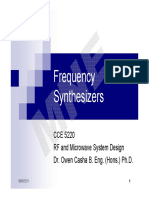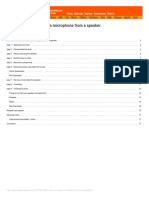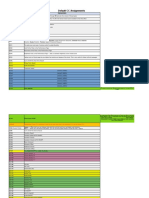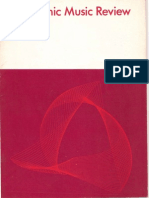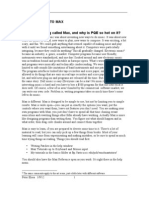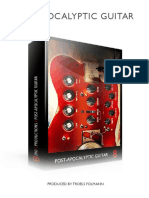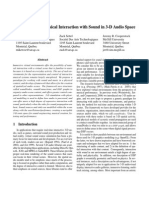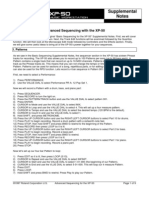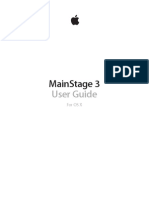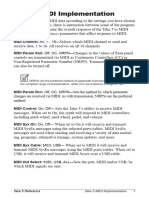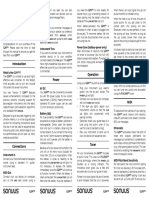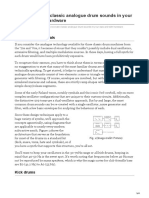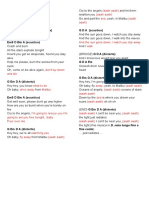0% found this document useful (0 votes)
126 views2 pagesMC-50 Quick Guide: (Can Be Used As Step Sequencer For Synths As Well)
This document provides a quick guide to programming rhythms and patterns on the MC-50 using its step sequencer and track features. Key functions include assigning instruments to patterns, recording patterns using the shift and play/pause buttons, copying and erasing patterns or instruments, and editing patterns in real-time or step recording modes. Additional features allow tuning the instrument, sending MIDI messages, quantizing patterns, and modifying recorded velocities or steps.
Uploaded by
Simone Titanium TomaselliCopyright
© © All Rights Reserved
We take content rights seriously. If you suspect this is your content, claim it here.
Available Formats
Download as RTF, PDF, TXT or read online on Scribd
0% found this document useful (0 votes)
126 views2 pagesMC-50 Quick Guide: (Can Be Used As Step Sequencer For Synths As Well)
This document provides a quick guide to programming rhythms and patterns on the MC-50 using its step sequencer and track features. Key functions include assigning instruments to patterns, recording patterns using the shift and play/pause buttons, copying and erasing patterns or instruments, and editing patterns in real-time or step recording modes. Additional features allow tuning the instrument, sending MIDI messages, quantizing patterns, and modifying recorded velocities or steps.
Uploaded by
Simone Titanium TomaselliCopyright
© © All Rights Reserved
We take content rights seriously. If you suspect this is your content, claim it here.
Available Formats
Download as RTF, PDF, TXT or read online on Scribd
/ 2









